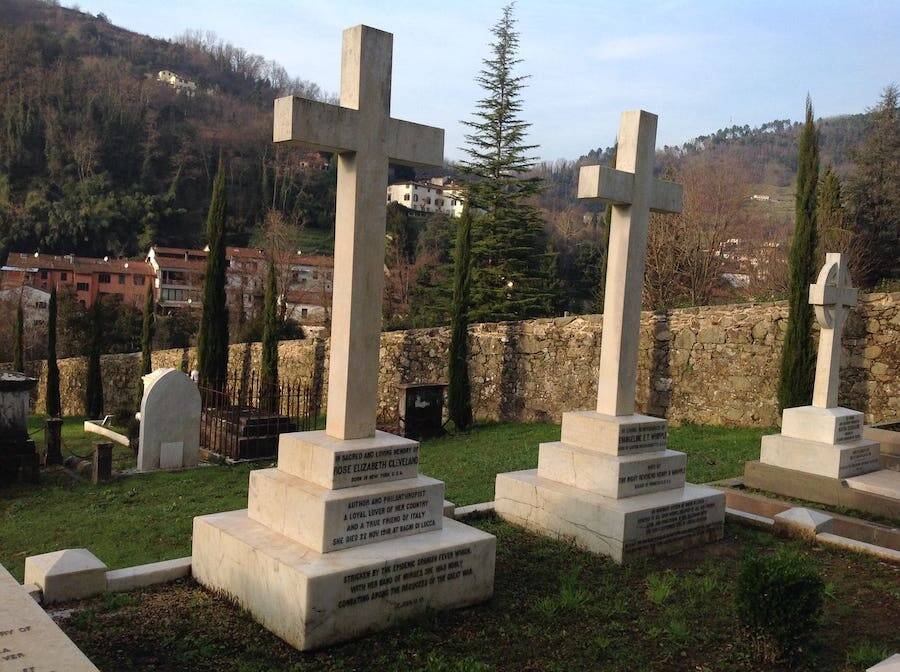"You are mine, and I am yours, and we are one, and our lives are one henceforth," the former First Lady wrote.

Library of Congress/New Jersey State ArchivesRose Cleveland served as First Lady for 14 months until her brother, former president Grover Cleveland, finally married.
Rose Cleveland, the sister of U.S. President Grover Cleveland, became the First Lady in 1885 after her bachelor brother appointed her. Apparently, in the 1880s, the country’s chief executive required a woman by his side to serve as White House hostess.
Rose was the perfect choice: intelligent, well-educated, and a well-respected author.
She was also a lesbian.
Nobody knew it at the time, of course. But a few years after her tenure as First Lady concluded (Grover married Frances Folsom in 1886), Rose began a relationship with Evangeline Simpson, a rich widow known for her philanthropic work with the American Red Cross.
The two wrote lovingly to each other while they lived separately; Rose in upstate New York and Evangeline in Massachusetts.
“You are mine, and I am yours,” Rose wrote, “and we are one, and our lives are one henceforth, please God, who can alone separate us. I am bold to say this, to pray & to live to it. Am I too bold, Eve — tell me? … I shall go to bed, Eve — with your letters under my pillow.”
You Can Read Rose Cleveland’s Letters Yourself
Rose and Evangeline’s romantic letters were just published by the Minnesota Historical Society in a book titled Precious and Adored: The Love Letters of Rose Cleveland and Evangeline Simpson Whipple, 1890-1918.
The tale of Rose Cleveland and Evangeline Simpson Whipple recreates “the story of one of the most remarkable love relationships between women in American history,” writes LGBTQ history and literature expert Lilian Faderman in the book’s foreword.

Kingmill Marrs Photographs/Massachusetts Historical SocietyRose Cleveland (left) and Evangeline Simpson Whipple wrote love letters to each other for decades. This is the only known photograph of them together.
The revelation of Rose and Evangeline’s love affair also underscores an important fact that had been lost to history: a gay woman sat as First Lady of the United States.
Historians believe that the couple likely met for the first time in 1889 in Florida, where most of the nation’s wealthy went to spend their vacations. But their written correspondence only began four years later.
“The women corresponded across states and continents, discussing their advocacy and humanitarian work — and demonstrating their sexual attraction, romance, and partnership,” MNHS Press editor-in-chief Ann Regan explained.
The letters paint quite a picture of how their relationship progressed. In them, Rose struggled to give a label to their relationship, writing things like “I cannot find the words to talk about it,” and “the right word will not be spoken.”
“This was before there was a concept of sexual orientation the way that we know it today,” the book’s co-editor Lizzie Ehrenhalt told the Washington Post. “That was really being invented right at the time they were writing letters in the 1890s, because that’s when sexology as a field gets going.”
And while the notion of “romantic friendship” was popular among the era’s women, particularly among women who were white and affluent, Rose and Evangeline’s relationship were explicitly more than that. Some letters confirm that the two women were sexually intimate with each other.
Even more surprising, the letters suggest that the couple was not discreet about their romantic relationship. They made frequent trips together abroad, owned property together, and even told their families about their love for one another.
A Sudden Split — And Reunion
Rose and Evangeline were together for six years until in 1896, rather abruptly, Evangeline decided to wed again, this time to a popular Episcopal preacher from Minnesota 35 years older than her named Henry Whipple.
Rose tried to win her partner back: “I do not think you need me now. But I plead that you will consider what I said this morning. I will give up all to you if you will try once more to be satisfied with me. Could you not take six months for that experiment? We would go away from everyone.”
After Evangeline married, Rose left to Europe with another female friend, though the nature of that relationship remains unclear. Their letters continued but the tone shifted. Rose stopped calling Evangeline by her pet name and signed her letters more formally as “R.E.C.”

Elisa Rolle/Queer Places Vol. 3.1Rose Cleveland and Evangeline Simpson Whipple were buried side by side in Italy.
Their tender communications picked up again after Evangeline’s second husband died, leaving her a widow yet again. Finally, Rose Cleveland did what was perhaps the closest thing to a marriage proposal that the women could experience.
“I need you and life is not long enough to always wait,” she told Evangeline. They packed their bags for Italy and never returned, living out their lives together in the Tuscan village of Bagni di Lucca.
So how did these letters come to light? Turns out a descendant of Henry Whipple donated family papers to the Minnesota Historical Society in 1969. But when the love letters between Rose and Evangeline were discovered amid the documents, the institute hid them away from the public until a 1978 inquiry from historians demanded that the collection be unsealed published in its entirety.
Ehrenhalt noted that the discovery of the letters had triggered in her “a lot of thinking about the small actions that erase queer and trans history” and, on the heels of the 50th anniversary of the Stonewall Riots, she hoped to rectify some of that erasure through the book.
Next, learn how Virginia Vallejo’s love affair with Pablo Escobar catapulted him to superstardom. Then, read how some historians believe James Buchanan was the first gay president of the United States.




